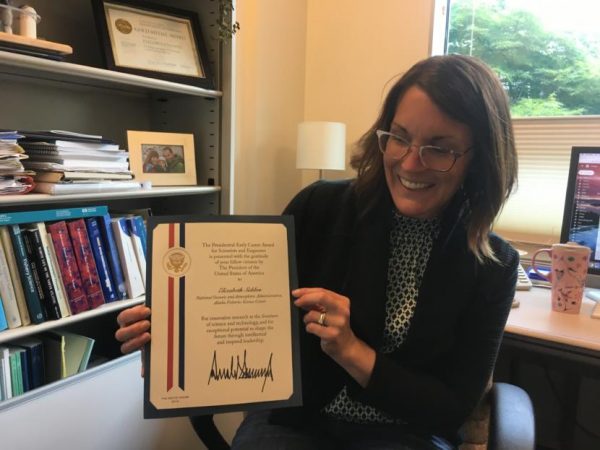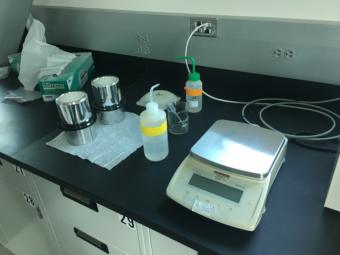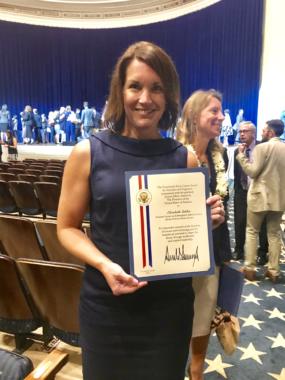
This summer, a Juneau-based fisheries scientist received the highest honor given to early-career scientists and engineers by the U.S. government.
Of the more than 300 scientists to receive the award, Elizabeth Siddon was the only Alaskan.
Siddon, who goes by “Ebett,” used to spend a lot of her time in the biology lab at the National Oceanic and Atmospheric Administration research facility in Auke Bay. As a PhD student, Siddon wanted to understand what happens to fish like pollock when the cold, cold Bering Sea gets a little warmer.
A whole corner of the lab is taken up with equipment for the impressively-named “bomb calorimeter.” Siddon would work for hours, exploding fish.

“You dry the fish, grind it into a pellet, put it into this and essentially blow it up, blow up the fish pellet,” she explained. “And you look at the change in the temperature of the water bath surrounding it. And that converts to calories. It’s the same process they use to figure out the calories in your food.”
Siddon still gets to do some research, but these days she spends most of her time talking to other scientists. She puts together something called the “Ecosystem Status Report” for the Bering Sea. The couple-hundred-page document is designed to give the managers of Alaska’s fisheries a well-rounded look at what’s happening in that part of the ocean.
The report is about fish, but it looks much further.
“We also want to think about what their food source is doing, and what their predator populations are doing, and what the temperature is doing,” Siddon said.

Siddon talks to climatologists, oceanographers and biologists who study everything from zooplankton to marine mammals. But she also talks to fishers and anyone else who has noticed something unusual, like seabirds washing up dead, or fish swimming belly-up but still alive.
Siddon asks what they’re seeing out there right now, and then she tries to put together all the pieces.
“And that’s the fun part, I think, of my job, is to say, ‘Well, maybe it’s not a one-off observation,’” Siddon said. “Maybe it actually is really linked to all of this other stuff we’re seeing, and we just haven’t — you know, we just need to make that connection.”

The report doesn’t make specific recommendations on how to manage fish stocks, but it does try to tell a story. And for the last couple years, Siddon said, the story has been pretty dramatic. In the winter of 2017-2018, a combination of warmer water and unusual pressure zones and wind patterns meant there was almost no sea ice in the northern Bering Sea. It was, Siddon said, unprecedented.
But then the next year — this past winter — it all happened again.
“I said, ‘We can’t be saying “unprecedented” again. We need a new terminology,’” Siddon said. “And so, you know, we have been calling it this ‘double whammy’ of two pretty harsh conditions for the system to respond to.”
In July, Siddon received the Presidential Early Career Award for Scientists and Engineers. The honor recognizes her scientific achievements as well as her leadership and community outreach.
Siddon made a quick trip to Washington, D.C., to accept the award, but now she’s back in Juneau and looking ahead. Alaska’s fishery management council meets a few times throughout the year, but the final quotas for 2020 will be set in December. With most scientists wrapping up their summer research, Siddon said it will be a mad dash from now until the council meeting to pull together the report — to find the story in a sea of data.
But, she said, that’s the fun part.




